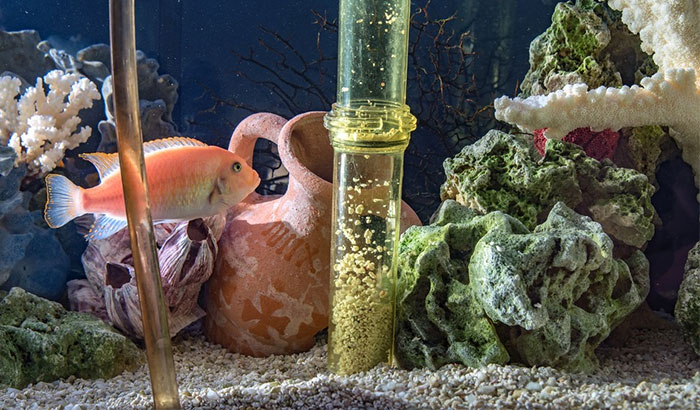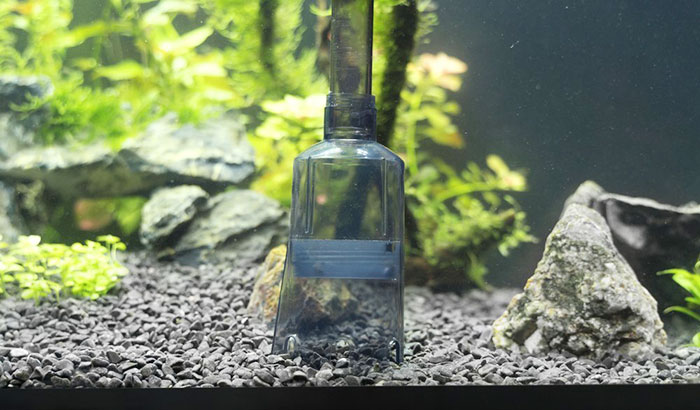I have a friend who has no pets yet thinks that having pet fish is low maintenance. He thinks fish just float around the water, blinking and gaping and dropping their jaws stupidly. If he had known how to clean old aquarium gravel, I doubt he would think that way.
Whenever I’m cleaning a fish aquarium, even a small one, it takes meticulous work. There are all sorts of slimy stuff I have to deal with to make the aquarium hospitable again. Aquarium gravel, in particular, takes careful work to clean, especially if I don’t have a vacuum nearby.
But there is one effective method I found that cleans aquarium gravel effectively without using a vacuum. Here’s how I do it.
Contents
How to Clean Old Aquarium Gravel Without a Vacuum
Materials Needed
To clean old aquarium gravel and get rid of algae and other nasty buildups, here are the materials I use:
- Hot or warm water
- Bleach’
- Basin
Step 1: Preparing the Solution
My solution is composed of 10% bleach and 90% warm or hot water. However, lower concentrations of bleach, 5 or 6 percent, will also work. Making sure that the concentration of bleach is low ensures the safety of the fish afterward.
Bleach is my preferred chemical liquid to clean the aquarium gravel of algae, food residue, fish waste, and other debris that makes aquarium algae dangerous to fish. I find other cleaning agents to be more harmful to fish – especially if not properly washed.
Step 2: Put Aquarium Gravel in Basin
The basin should be large enough to contain all the aquarium gravel plus the bleach and water solution to cover the gravel completely.
Step 3: Clean the Aquarium Gravel
Ensure that there’s enough bleach and warm/hot water solution to cover the entirety of the aquarium gravel. Stir the gravel to irritate the cleaning solution.
DO NOT let the gravel soak in the bleach solution for more than a quarter of an hour. Bleach has chemical compounds that can break the gravel when they react to those compounds.
Step 4: Rinse the Aquarium Gravel
Drain the basin of the bleach and water solution. Then use warm or hot water to rinse the gravel repeatedly. I usually rinse the gravel 3 to 4 times to make sure that the bleach is washed away.
Step 5: Dry the Gravel
I let the gravel dry naturally. I either allow it to bask in the sun or just leave it to air dry.
Step 6: Return Gravel in the Aquarium
Once the gravel is completely dry, I return it to the aquarium. I fill the aquarium with clean water, replace the plants and decorative rock pieces, then put the fish back in.
All done!
Reasons Why Cleaning Fish Tank is Necessary
Algae forms in aquariums. The formation of algae is natural. And while most algae that form in aquariums are harmless to fish, too much of them can disrupt the delicate balance of the aquarium’s ecosystem.
Too many algae can kill the fish. I suggest cleaning the aquarium every two weeks to prevent endangering the fish.
There is another reason why it’s necessary to clean a fish tank regularly. When fish go about their business, their bodies produce ammonia. Ammonia is toxic to fish; the fish excrete the substance because it is the waste their bodies produce. Too much ammonia will kill the fish.
But there is a way to combat the rapid development of ammonia in a fish tank.
Is it Necessary to Put Aquarium Gravel into a Fish Tank?
With all the work required to keep fish tanks clean, I had to wonder if aquarium gravel is even worth it. At first, I thought it was just a decorative piece. It turns out it isn’t.
Aquarium Gravel Provides Biological Filtration
Gravel opens the way for the growth and development of a specific kind of bacteria beneficial to aquatic life. This type of bacteria is a part of a natural marine ecosystem.
The bacteria that aquarium gravel houses eliminate waste products in the aquarium. Without gravel and, therefore, without the bacteria, it will take more work to keep the aquarium clean without the bacteria, the nitrogenous wastes build up more quickly and kill the fish.
The bacteria can consume just about any food source. These food sources can include substances that other life forms find poisonous. In an aquarium setting, this food source is ammonia fish waste.
The bacteria consume ammonia fish waste and transform it into Nitrite. Then, another kind of bacteria grows in the ecosystem and consumes Nitrite, then converts it into Nitrate. Nitrate is less toxic to fish than both Nitrite and ammonia.
However, Nitrate can also harm the fish if its levels go beyond the healthy amount. That is why it will still be necessary to clean the tank – just not as often as when there’s no gravel.
Final Thought
For me, using bleach and water is the best method on how to clean old aquarium gravel. Just be careful not to use too much bleach. As much as possible, keep the concentration below ten percent. And afterward, thoroughly rinse the gravel with hot or warm water until no bleach remains. This method is easy, convenient, and requires only common home materials.


